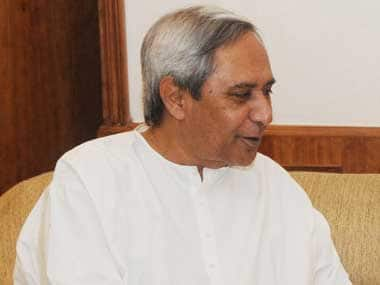Bhubaneswar: For close to a fortnight now, newspaper readers in Odisha—no matter which newspaper they read—have been waking up to the smiling visage of Naveen Patnaik first thing in the morning. The Biju Janata Dal (BJD) and its omnipresent president have simply taken over the front page of all vernacular newspapers—and some English newspapers too—irrespective of their political leanings. On most days, Naveen is found extolling one virtue of his government or the other. But there are also times when the advertisements abandon their propagandist streak and take on a rather combative posture – like the day after Narendra Modi’s highly successful rallies in Nuapada, Bolangir and Rourkela when the ad screamed: “Where were they at the time of Phaiilin?” Describing the likes of Modi and Rahul Gandhi (without actually naming them) as ‘migratory birds’, the ad accused them of shedding ‘crocodile tears’ for Odisha.[caption id=“attachment_1483249” align=“alignleft” width=“380”]  Odisha Chief Minister and Biju Janata Dal chief Naveen Patnaik. Image courtesy PIB [/caption] Local television channels too have had more than their fair share of the advertisement cake. Green, the colour of the BJD flag, and the ‘conch’, the symbol of the ruling party, have dominated the television screens as the BJD has launched an unprecedented ad blitz that has simply driven the other parties out of the prime space in the media. Newspapers and television channels are hardly complaining. They are instead busy counting the moolah – most of it in cash, mind you. After all, elections don’t happen every day nor does such manna fall from heaven often. The value—and the size—of the ads vary according to the standing of the newspaper and television channel concerned and its political leanings, BJD insiders say. They point to the same ad appearing in full page size in one newspaper and in quarter page size in another as an indication of the different yardsticks fixed for individual media houses. “But we have made sure that nobody misses out on the ads,” says a member of the ruling party’s media management team. The going rate for a full page ad in a major newspaper, according to sources in the thick of things, is between Rs 8 to 10 lakh per insertion, of which only about 25 percent is paid in cheque (after deducting the agency commission of 15 percent) and the rest in cash, to beat the Election Commission ceiling on expenditure. For smaller ones, it could be anything between Rs 50, 000 to Rs 2 lakh. Given that the largesse has been pouring in for well over a fortnight now, the cumulative outgo from the BJD coffers would work out to several crores by the time the campaign ends next Tuesday. It goes without saying that such large sums of money seldom come without a quid pro quo attached to it. “It does not have to be spelt out in as many words. When you accept that kind of money, a major part of it in cash, it is understood that you won’t publish anything very damaging about the ruling party or the government,” admits the owner of a vernacular daily who has been a recipient of the windfall. The ruling party’s media managers say the strategy has worked just fine. “With full page ads on the front page every morning, we have achieved two things. First, we have made sure that the newspaper reader wakes up to the achievements of our government every morning. Second, we have gobbled up the first page and with it the chance of anything critical appearing on the front page,” said a party leader closely involved with the ‘management’ of the media. Given the adversarial relationship that the media usually has with any incumbent government, this is the time when one would expect a spate of stories about the acts of omission and commission by the government and the ruling party. But that is not quite the way things have panned out in Odisha. Hard hitting stories against the establishment are conspicuous by their absence while Naveen is straddling the media space like never before. Discerning viewers have not missed the propensity of television news channels to make sure that Naveen Patnaik’s whirlwind electioneering gets more than its fair share of coverage. Most channels have their DSNGs stationed well in time at places where Naveen is scheduled to campaign for the day so that the BJD supremo’s halting, faltering speeches in twisted Odia are beamed live for the benefit of the viewers. True, star campaigners of the two other major parties—Congress and BJP—like Rahul Gandhi and Narendra Modi too have had the benefit of live coverage. But there has been an unmistakable tendency among channels to cut to a Naveen Patnaik rally just when these leaders begin sharpening their attack on the BJD boss. The BJD believes its strategy of stuffing the media—at least the potentially troublesome sections within it—with plenty of ads will keep its mouth shut and win the day for it. Large sections of the media too have obliged all too eagerly. But it remains to be seen whether the strategy has also worked with the newspaper readers and television viewers.
Hard hitting stories against the establishment are conspicuous by their absence while Naveen is straddling the media space like never before.
Advertisement
End of Article


)
)
)
)
)
)
)
)
)



